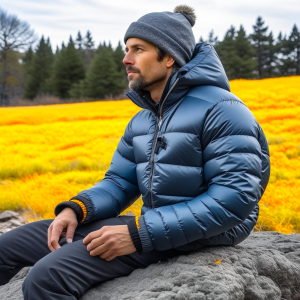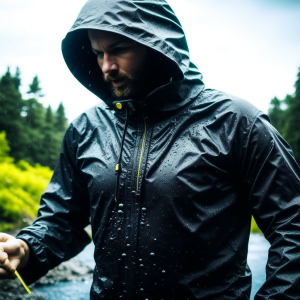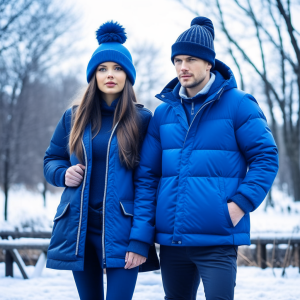Master the Art of Layering Cold Weather Clothing for Unmatched Warmth and Style
As winter envelops us in its chilling embrace, the need for both warmth and fashionable attire becomes increasingly critical. The drop in temperatures compels us to adopt effective layering techniques, but have you ever considered the principles that govern successful layering? In this article, we will explore the science behind cold-weather clothing layering, dissecting the key factors that distinguish certain garments in the battle against the biting cold, ensuring you remain both comfortable and stylish throughout the season.
Layering your clothing is not just a trend; it is a strategic method for optimizing heat retention and comfort in extremely cold conditions. When temperatures fall, our bodies instinctively attempt to conserve heat by narrowing blood vessels, often resulting in cold extremities. However, this natural reaction frequently proves inadequate on its own. This is where the thoughtful practice of layering comes into play, allowing you to create a robust barrier against the cold while preserving mobility and overall comfort.

Establishing a Robust Base Layer: The Essential Foundation for Winter Warmth
The base layer is the cornerstone of your winter wardrobe, designed to fit snugly against your skin while delivering critical insulation. To appreciate the significance of this layer fully, we must delve into the science of moisture management and how it profoundly affects your warmth and comfort during the colder months ahead.
Leveraging Moisture-Wicking Fabrics for Optimal Comfort
Choosing the right fabric for your base layer is paramount for effective moisture management. The importance of moisture-wicking capabilities cannot be overstated. These specially designed fabrics actively draw moisture away from your skin—be it perspiration or external dampness—preventing it from building up and causing discomfort. A high-quality base layer not only acts as a moisture shield but also ensures that you remain dry and cozy, even in challenging weather conditions, significantly enhancing your overall warmth and comfort.
Evaluating Insulation: The Benefits of Merino Wool and Synthetic Options
Next, let's discuss how materials like merino wool and synthetic fibers enhance the insulating power of your base layer. Merino wool is revered for its natural warmth and breathability, making it an excellent choice—it provides insulation while efficiently wicking moisture away. In contrast, synthetic materials like polyester and nylon offer a superb balance of durability and insulation, creating a warm microclimate next to your skin that effectively retains body heat, ensuring you stay cozy even in the harshest environments.
Finding the Ideal Fit: Essential Tips for Base Layer Effectiveness
Selecting the correct fit for your base layer involves more than just picking your usual size; it’s about optimizing its performance. A snug-fitting base layer maintains constant contact with your skin, thus enhancing its insulating and moisture-wicking properties. However, achieving the right balance is vital—too tight can restrict your movement and comfort, while too loose may hinder performance. When considering fit, account for the type of activity and your overall layering strategy to ensure seamless integration with your other winter garments.
Fundamentally, the base layer transcends the role of simple clothing; it functions as a sophisticated moisture-wicking and insulating barrier against the harsh winter elements. By understanding the unique properties of materials like merino wool and synthetic fibers, as well as mastering the fit, you can elevate your base layer from just an article of clothing to a crucial component of your cold-weather defense.
Optimizing the Insulating Layer: Your Key to Effective Body Heat Retention
 As we transition to the insulating layer, we emphasize its vital role in capturing and retaining heat around your body. This layer is essential in the science of heat retention, functioning as a protective cocoon against the harsh winter conditions. Let’s examine critical concepts such as warmth-to-weight ratios, the benefits of down insulation, and the eco-friendly advantages of synthetic alternatives.
As we transition to the insulating layer, we emphasize its vital role in capturing and retaining heat around your body. This layer is essential in the science of heat retention, functioning as a protective cocoon against the harsh winter conditions. Let’s examine critical concepts such as warmth-to-weight ratios, the benefits of down insulation, and the eco-friendly advantages of synthetic alternatives.
Understanding Warmth-to-Weight Ratios for Effective Insulation
Comprehending the concept of warmth-to-weight ratios is fundamental when selecting an insulating layer. This principle stresses that insulation materials should deliver exceptional warmth without adding unnecessary bulk. Essentially, it’s about maximizing warmth while minimizing weight, allowing for freedom of movement and comfort. This balance becomes especially important for those who need insulation without feeling weighed down, enabling unrestricted activity even in cold conditions.
Down Insulation: Lightweight Warmth for Adventurers
Down insulation is a top choice for individuals seeking unparalleled warmth in an ultra-lightweight form. Sourced from the soft feathers of ducks and geese, down is celebrated for its outstanding warmth-to-weight ratio. Its lightweight, compressible characteristics make it a favored option for winter enthusiasts who require effective insulation without compromising mobility. Understanding the allure of down insulation is crucial in recognizing its role in crafting an insulating layer that merges warmth, comfort, and flexibility.
Choosing Synthetic Insulation: Ethical Warmth for Every Condition
Synthetic insulation materials, primarily composed of polyester fibers, have become popular ethical alternatives within the insulation landscape. The notable feature of synthetic insulation is its ability to retain warmth even in wet conditions, an area where down may falter. This resilience in unpredictable weather makes synthetic fabrics ideal for various climates. Additionally, selecting synthetic options aligns with ethical considerations, allowing you to enjoy warmth without compromising personal values.
Establishing the Right Thickness: Precision is Key in Insulation Selection
Determining the right thickness for your insulating layer requires meticulous consideration; precision is crucial. Evaluate the expected level of cold exposure alongside your layering strategy when selecting thickness. In milder climates, a thinner insulating layer might suffice, while harsher conditions may require a thicker, more robust option. By grasping the nuances of insulation thickness, you can customize your insulating layer to meet the specific demands of your winter endeavors.
Ultimately, the insulating layer transcends its conventional role, becoming a strategic ally in the fight against the cold. By deciphering the intricacies of warmth-to-weight ratios, appreciating the benefits of down insulation and synthetic alternatives, and offering guidance on thickness selection, we can transform the insulating layer into a calculated defense mechanism against winter’s frosty grip.
The Outermost Layer: Your Essential Defense Against Harsh Winter Elements
The outermost layer acts as your vital shield against biting winds and frigid temperatures. This layer serves dual functions: it protects against environmental elements while also playing a significant role in moisture management. As we delve deeper into this outer layer, we will uncover the importance of breathability, the transformative benefits of DWR finishes and Gore-Tex membranes, and the essential windproof features that enhance insulation efficiency.
Breathability: The Key to Comfort and Effective Moisture Management
Frequently overlooked, breathability is a critical characteristic of the outer layer that profoundly influences overall comfort. This aspect refers to the fabric’s ability to allow sweat vapor to escape from your body while preventing external moisture from penetrating. Achieving this delicate balance keeps you dry and comfortable, thus mitigating the chilling effects of trapped moisture. A breathable outer layer is essential for maintaining a cozy microclimate within your clothing, ensuring exceptional comfort during adverse weather conditions.
DWR Finishes and Gore-Tex: The Pinnacle of Waterproofing Technology
 DWR (Durable Water Repellent) coatings and Gore-Tex membranes are leaders in the field of cold-weather outerwear. DWR finishes imbue fabrics with water-repellent characteristics, creating an effective barrier against rain, sleet, and snow. Gore-Tex and similar technologies elevate waterproofing to unparalleled levels by offering a perfect blend of impermeability and breathability. Understanding the synergy between these technologies is crucial for remaining dry and comfortable, even amidst the most severe weather conditions.
DWR (Durable Water Repellent) coatings and Gore-Tex membranes are leaders in the field of cold-weather outerwear. DWR finishes imbue fabrics with water-repellent characteristics, creating an effective barrier against rain, sleet, and snow. Gore-Tex and similar technologies elevate waterproofing to unparalleled levels by offering a perfect blend of impermeability and breathability. Understanding the synergy between these technologies is crucial for remaining dry and comfortable, even amidst the most severe weather conditions.
Windproof Features: Enhancing Your Protection Against Cold Air
Windproof characteristics are vital in frigid environments, especially when biting gusts can penetrate even the sturdiest materials. The windproof outer layer serves as an unyielding barrier against cold air, improving comfort while preserving the insulation of the inner layers. By blocking chilling winds, your outer layer becomes a robust protector, ensuring that your carefully selected layers collaborate to keep you warm and shielded from harsh elements.
In essence, the outermost layer transcends being merely a protective shell; it is an advanced defense that expertly balances breathability and waterproofing. By understanding the importance of breathability, exploring the advancements of DWR finishes and Gore-Tex membranes, and appreciating the essential role of windproof features, we elevate the outer layer into a versatile garment that excels in style, functionality, and weather resilience.
Effective Strategies for Achieving Ultimate Warmth and Style This Winter
With a strong understanding of layering principles in place, let’s explore actionable tips and strategies to enhance your cold-weather experience, effortlessly combining warmth with enduring style. Accessories play an integral role in winter attire, often serving as the unsung heroes that can elevate your wardrobe. From the crucial warmth provided by thoughtfully selected gloves to the stylish flair of a cozy hat and the comfort of thermal socks, these seemingly minor details are essential in achieving a fashionable and comfortable winter ensemble.
The Indispensable Role of Accessories: More Than Just Decorative
Accessories are far more than mere embellishments; they are pivotal elements in your defense against the cold. Beyond their aesthetic appeal, items such as gloves, hats, and thermal socks perform vital functions in enhancing your overall warmth. By carefully incorporating these accessories, you can ensure that every part of your body is shielded from the chill, effectively preventing valuable body heat from escaping into the frigid air.
Investing in Quality Accessories: Recommendations for Ultimate Warmth
The quest for warmth extends beyond your base and insulating layers; it also includes the careful selection of accessories. Invest in high-quality gloves made from insulating materials like fleece or lined leather to create a robust barrier against the cold. A warm hat with extra insulation or a cozy faux-fur lining not only looks stylish but also helps retain heat. Opt for thermal socks crafted from merino wool or advanced synthetic blends to guarantee maximum warmth and effective moisture management.
Fashion-Forward Tips: Merging Functionality with Style
Staying warm during icy temperatures doesn’t mean sacrificing style. Use these clever styling techniques to navigate the winter landscape with finesse. Experiment with layering various textures in your outfit to create visual interest while simultaneously enhancing insulation. Choose winter-appropriate colors that complement the snowy environment, and don’t hesitate to accessorize with bold pieces like a vibrant scarf or chic earmuffs to elevate your overall look.
Ultimately, accessories serve as the understated architects of a well-rounded winter outfit. They not only enhance warmth but also allow you to express your sense of style, even in the coldest conditions. By selecting high-quality accessories and infusing your winter wardrobe with thoughtful styling, you can conquer the chill while showcasing undeniable elegance.
Embrace the Perfect Blend of Style and Functionality in Your Winter Wardrobe
As we conclude our exploration of conquering the cold, it’s vital to acknowledge the importance of style in winter attire. Dressing for the cold does not require sacrificing your fashion sense; instead, today’s fashion landscape celebrates the seamless integration of functionality and flair. Numerous outdoor and fashion brands have recognized and embraced the demand for winter gear that not only keeps you warm but also radiates confidence and contemporary elegance.
The Evolution of Cold-Weather Clothing: A Stylish New Era
 The cold-weather clothing industry is experiencing a renaissance, where winter gear evolves beyond mere functionality to become a symbol of innovation and style. Designers and brands are increasingly acknowledging the necessity for clothing that effortlessly merges practicality with aesthetic appeal. This transformation has ushered in a new era of outerwear that not only provides warmth but also captivates with its visual charm.
The cold-weather clothing industry is experiencing a renaissance, where winter gear evolves beyond mere functionality to become a symbol of innovation and style. Designers and brands are increasingly acknowledging the necessity for clothing that effortlessly merges practicality with aesthetic appeal. This transformation has ushered in a new era of outerwear that not only provides warmth but also captivates with its visual charm.
Leading Brands: Fusing Style with Functionality
Several brands are at the forefront of this fashion revolution, skillfully merging style and practicality in their winter apparel. Canada Goose is celebrated for its luxurious down coats that deliver exceptional warmth without sacrificing style. The North Face integrates cutting-edge technology into its designs, creating outerwear that balances chic aesthetics with practical functionality. Meanwhile, Moncler has redefined the puffer jacket, transforming it into a high-fashion statement piece, demonstrating that winter clothing can be both functional and runway-ready.
Strategic Styling: Elevate Your Winter Fashion Game
Now, let’s explore how to effectively merge warmth and style in your winter outfits. Choose standout pieces that fulfill both functional and aesthetic roles, such as a beautifully tailored wool coat or a sleek parka that serves as the centerpiece of your ensemble. Experiment with layering a chunky knit sweater over a fitted jacket for a cozy yet fashionable appearance. Don’t shy away from introducing vibrant colors into your winter look by accessorizing with eye-catching scarves or trendy boots.
Ultimately, embracing style in the cold is no longer a contradiction; it’s a vibrant reality shaped by a dynamic fashion industry. As fashionable cold-weather gear emerges, adorned by innovative brands, the narrative shifts from mere survival to personal expression. So, immerse yourself in this style renaissance, select pieces that empower you, and redefine the boundaries of fashion amid the wintry embrace of the season.
The post Cold Weather Clothing Layers: The Science Explained appeared first on Survival Bite.
The Article Cold Weather Clothing Layers Explained: Understanding the Science Was Found On https://limitsofstrategy.com


This article really highlights the practical yet stylish aspects of cold-weather layering, which is something I’ve been experimenting with in my own wardrobe. I’ve found that understanding not just how to layer, but why certain fabrics work better together, makes a significant difference in staying both warm and fashionable.
I completely relate to your experience with cold-weather layering. It’s fascinating how understanding the properties of different fabrics can elevate not just our fashion game, but our overall comfort too. I’ve found that materials like merino wool and moisture-wicking synthetics can make such a difference in regulating body temperature without adding bulk.
You’ve hit on a key point about how the right materials can transform the layering experience. Merino wool, for instance, is a game changer—not only does it provide warmth, but it also breathes well and manages moisture nicely. I remember the first time I wore a lightweight merino base layer; I was surprised by how comfortable it felt throughout the day, even with temperature changes.
You really nailed it with the Merino wool insights. It does seem like a perfect example of how thoughtful material choices can enhance our outdoor experiences. I had a similar revelation the first time I used a merino base layer during a winter hike. I was expecting that typical scratchy sensation you’d get from wool, but it was surprisingly soft and comfortable. The moisture-wicking properties are especially nice since it keeps you dry and regulates body temperature while you’re on the move.
I completely relate to your experience with cold-weather layering. There’s something so satisfying about figuring out the right combination of fabrics and styles. I’ve found that fabrics like merino wool and layering with lightweight fleece really seem to trap warmth without adding bulk. It’s amazing how a bit of insulating material can make a big difference.
It’s great to hear you’ve been diving into layering. Understanding fabric interactions really is key; it’s fascinating how materials like merino wool naturally regulate temperature while still looking sharp. I’ve found that mixing textures can elevate a simple outfit, too. For example, pairing a chunky knit with a sleek, wind-resistant jacket not only adds dimension but also keeps you cozy. It’s like creating a little cocoon of comfort that also turns heads. What fabrics or combinations have you enjoyed the most in your own experiments?
You raise some compelling points about the principles of layering for cold weather. In my own experience, I’ve found that it’s not just about the quantity of layers, but the quality and compatibility of fabrics that truly impact warmth and comfort. For instance, moisture-wicking materials as a base layer are crucial for preventing that clammy feeling, which seems to contradict the very purpose of layering.
You bring up a great point about the balance between quantity and quality in layering. I’ve definitely had my share of experiences where I loaded up on layers, only to find myself feeling bulky and overheated. It’s interesting how the right base layer can really set the tone for comfort in colder weather.
You bring up a great point about the balance between quantity and quality in layering. I’ve definitely been there too—wearing too many layers and ending up feeling like a marshmallow. It’s such a delicate balance, and getting that base layer right can make all the difference. I find merino wool to be a game-changer; it’s breathable yet insulating, which helps me avoid that dreaded overheating, especially when I’m moving around outdoors.
You’re spot on about finding that sweet spot with layering; it’s such an art. I’ve had my fair share of marshmallow moments too, especially during winter hikes where I’m adding layers as the temperature drops, then regretting it once I start moving. That base layer really does set the tone for everything.
You nailed it with that thought on layering! It’s so easy to get excited and pile on too many layers, only to feel like a marshmallow after a while. Finding that right base layer really can change everything—like it’s the unsung hero of winter wear.
You’ve touched on a personal struggle I think many can relate to. It’s fascinating how just one good base layer can change the whole experience in cold weather. I’ve found that a well-fitted, moisture-wicking base layer not only traps warmth but also manages sweat effectively. It’s all about finding that sweet spot in materials.
You make a great point about the quality and compatibility of the fabrics—it’s often an overlooked aspect of layering that can really make or break your experience in the cold. I’ve been down that rabbit hole myself, where I found that the fit and feel of the materials underneath my coat can change everything. It’s like building a house; if you don’t have a solid foundation, the whole structure can feel shaky.
You’ve really nailed it with the house analogy—it’s a perfect metaphor for how important those foundational layers are. I’ve found that as much as I love the aesthetics of winter wear, it’s the practical elements that make the most difference. The feel of merino wool or a quality thermal makes all the difference when you’re out in the cold for an extended time.
You’ve highlighted a crucial point about winter wear that often gets overlooked in favor of style. It’s easy to get caught up in how something looks, but when you’re facing biting winds and cold temperatures, that ‘feel’ of quality materials like merino wool or high-grade thermals makes a world of difference. There’s something about wearing those foundational layers that not only keeps you warmer but also gives you a certain confidence to face the elements.
You’ve raised such an important aspect of winter wear that I can totally relate to. It’s true that while style can draw us in, the real game-changer in those frigid conditions is the quality of the materials we choose. I remember a particularly harsh winter a few years back when I opted for a cheap coat just for the look. After a few days battling the cold, I quickly learned that the right layers can make not just a physical difference, but a psychological one too.
You hit the nail on the head. It’s easy to get caught up in the aesthetic of winter wear, but when the temperature drops, that stylish coat can feel like a huge mistake. I’ve had my share of regrettable fashion choices too. It’s funny how that initial thrill of looking good can turn to dread when the cold winds hit.
I completely agree with you on the merits of those foundational layers. When I first started layering for winter, I was all about the style, but I quickly learned that a good base layer changes everything. Merino wool, in particular, has this incredible ability to regulate temperature and wick moisture. I remember a long hike last winter; I was initially skeptical about the investment in quality layers, but the comfort and warmth made it so much more enjoyable to be out in the cold.
It’s interesting to hear how your perspective on layering has evolved. When you start out, it’s easy to prioritize looks over function, but the moment you experience the difference that quality base layers can make, it’s like a revelation. Merino wool, in particular, seems to have a special place in many people’s gear lists for good reason. That natural fiber has a unique ability to adapt to varying conditions. It doesn’t just retain warmth; it breathes, which is crucial during activities like hiking where you’re constantly on the move.
You hit the nail on the head with the investment in quality layers! I remember my first experience with Merino wool too—it was like I’d unlocked a secret to enjoying the outdoors in winter. The temperature regulation is a game changer; you can feel the difference right away. It not only keeps you warm but also prevents that clammy feeling when you start to sweat.
You’ve hit the nail on the head with the importance of fabric quality and compatibility. It’s so true that a great layering system can fall flat if the materials don’t work together. Moisture-wicking fabrics are essential for the base layer because they keep sweat away from the skin, helping maintain that cozy feeling instead of getting cold and damp.
You’re spot on about the significance of fabric quality and compatibility. I’ve had my fair share of outings where I underestimated the base layer, thinking any old shirt would do, only to end up soaked and shivering. Moisture-wicking fabrics truly make a world of difference, especially during those intense activities like hiking or skiing where the temperature can swing drastically.
You nailed it on the importance of fabric quality—if you’re considering a pick-up game or just want to improve your game, choosing the right shoes can make all the difference in how you feel on the court.
‘Xero Shoes: Best Choices to Boost Your Pickleball Game’
https://soonrs.com/xero-shoes-best-choices-to-boost-your-pickleball-game/.
It’s interesting to think about how layering goes beyond mere fashion—it’s really a blend of science and personal comfort. I remember a particularly wintery week last year when I decided to experiment with layering different materials. Using a moisture-wicking base layer and a down mid-layer made a noticeable difference in my warmth, especially while hiking. It’s fascinating how the right combinations can transform our outdoor experiences. It’s also a reminder of how technology in fabric—like thermal insulation in activewear—has evolved to keep us warm without sacrificing style. I’d love to hear if others have similar stories or tips that have worked for them in staying warm this winter!